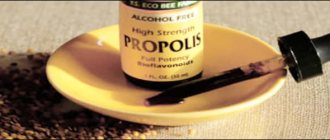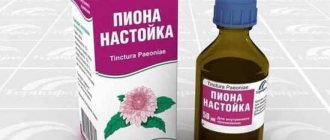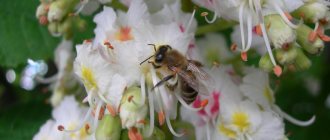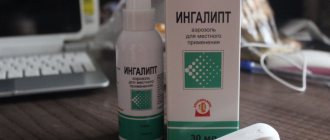Home | About us | Delivery | Advertisers | Login | Registration
Delivery on Sundays and holidays does not work!
- Medicines
- dietary supplementsVitamins
- Categories from A to Z
- Brands from A to Z
- Products from A to Z
- Medical equipment
- beauty
- Child
- Care
- Honey products appointments
- Herbs and herbal teas
- Medical nutrition
- Journey
- Making medicinesStock
Pharmacy online is the best pharmacy in Almaty, delivering medicines to Almaty. An online pharmacy or online pharmacy provides the following types of services: delivery of medicines, medicines to your home. Online pharmacy Almaty or online pharmacy Almaty delivers medicines to your home, as well as home delivery of medicines in Almaty.
my basket
Apteka84.kz is an online pharmacy that offers its customers medicines, medicinal and decorative cosmetics, dietary supplements, vitamins, baby food, intimate products for adults, medical equipment and thousands of other medical and cosmetic products at low prices. All data presented on the Apteka84.kz website is for informational purposes only and is not a substitute for professional medical care. Apteka84.kz strongly recommends that you carefully read the instructions for use contained in each package of medicines and other products. If you currently have any symptoms of the disease, you should seek help from a doctor. You should always tell your doctor or pharmacist about all the medicines you take. If you feel you need further help, please consult your local pharmacist or contact our GP online or by telephone.
© 2021 Pharmacy 84.
Mint selection
The main ingredient of mint tincture is a perennial herbaceous plant of the genus Mint (Mentha) of the Lamiaceae family. This genus includes more than 25 species of mint, used in various fields: pharmacology, cosmetology, aroma and herbal medicine.
Peppermint (Mentha piperita L) is most commonly used for preparing alcoholic beverages.
. Translated from Latin, Piperitus means hot, piper pepper. In its composition, this particular variety contains a high amount of essential oils, which are natural flavors of mint tincture. Their concentration, varying from the growing conditions of the plant, the year of collection, storage conditions of raw materials and storage duration, reaches 4-6% in peppermint inflorescences, 2.5 to 3% in leaves, and up to 0.3% in stems.
Photo “Morphology of Peppermint flowers and leaves under a microscope”
a – flowering sterile inflorescence of peppermint (stamens are completely absent); b – macro image of the lower surface of a mint leaf with a vein and spherical essential oil glands, x140; c – macro image of the surface of a flower calyx with cone-shaped epidermal cells and spherical essential oil glands, x742.
The main active organic substance found in essential peppermint oil is menthol
. On average, its content varies from 60 to 70%.
(Menthol, Menthol, Mentholum)
Menthol has a characteristic strong smell of peppermint and that same “chill” taste. This component is volatile at ordinary temperatures, distills with water vapor and easily dissolves in ethyl alcohol.
Part of the menthol is presented in mint in the form of esters of acetic and valeric acids.
Peppermint can and should be used in beverage preparation technology. The aroma and taste will not only not be lost from the source material during distillation, but will also reveal a new side. Therefore, for mint tincture, we will take peppermint.
Cooking recipes
Folk and traditional medicine has many different recipes for preparing mint-based tinctures and decoctions. The pharmaceutical industry is actively producing an alcohol version. It is this form, according to scientists, that has the greatest extraction of beneficial substances and, accordingly, has the best therapeutic properties.
Moreover, the alcohol base of the drug facilitates long-term storage of the product , which facilitates the transportation and sale of products. You can purchase the factory-made drug at any pharmacy chain, or you can make an analogue of the product at home yourself.
Traditional medicine, in addition to alcohol tinctures, has recipes for water decoctions. The use of such decoctions is recommended for persons, for example, with peptic ulcers or other diseases for which the use of alcohol-containing substances is prohibited.
Classic alcohol tincture
The classic factory tincture contains only three ingredients: peppermint leaves and oil, as well as 90% alcohol. To prepare 500 ml of tincture you will need:
- 25 g each of oil and peppermint leaves;
- 90% alcohol – 490 ml.
All components are mixed and infused for a week. Harvesting leaves should be done in dry weather, during the period when approximately half of the plant blooms.
Cooking technology
The ingredients to create homemade mint tincture will require:
- Rectified ethyl alcohol 96.6% vol.
- Peppermint
- Caraway
The mint tuning technology can be described point by point:
- Preparation of mint infusion
- Preparation of aromatic alcohol
- Blending of ingredients
Let's proceed to each stage and start with creating a mint infusion.
Mint infusion
To prepare mint infusion you will need the following ingredients:
- caraway seeds – 50 g
It will add piquancy and enhance the flavor of the tincture.
- fresh peppermint – 30 g
- water-alcohol mixture 50% vol. — 3 l
The creation of mint infusion is based on an extraction process, as a result of which the components of the original plant material are transferred into the extractant (ethyl alcohol). This means that after extraction, the components contained in plant raw materials (essential oils, pigments, salts, carotenoids, alkaloids and other substances) will go into an alcohol solution and will be very tasty.
One important rule applies here: the brighter the aroma of the raw materials, the richer the final product will be! Therefore, if possible, use only the best high quality raw materials. Selected cumin without any foreign musty or moldy odors. Regarding peppermint, I recommend fresh mint if possible. If you don't have it on hand, take it dry. Just remember that the flavor of the tincture will be weaker due to drying, storage and external factors.
We prepare mint infusion using the direct infusion method - all ingredients are mixed in one container. For better extraction of components, mint and cumin are crushed.
Next, pour the ingredients into a 13 liter still “Doctor Guber” 2.0.
Fill with a water-alcohol mixture with a strength of 50% vol.
Mix thoroughly using a Dr. Guber stirrer.
Let it brew for 12 hours at room temperature with the tank lid closed.
Next, we proceed to obtaining aromatic alcohol.
Aromatic mint alcohol
As the main equipment for fractional distillation of mint infusion, we use the “Midget 2.0” universal moonshine still, the design of which is based on patented technology.
The assembly of the device is quite ingeniously simple and very functional.
Includes:
- still “Doctor Guber” 2.0
- copper cap levels “mono-aroma”
- viewing diopters 3"
- head "Midget 2.0"
- glass with aftercooler 2.0
Temperature control in the tank and column is carried out using analog thermometers.
The heating source is a Gastrorag induction cooker.
Operating power: 1.5 kW.
Useful properties of tincture
Peppermint is a herbaceous cultivated plant that was developed by hybridizing several wild species. Today, mint can be found everywhere in gardens and vegetable gardens, and some selected varieties are cultivated on an industrial scale.
Man first began to use mint back in the days of Ancient Rome. At first it was used as a seasoning in cooking, then in perfumery - for example, mint was used to rub tables to make guests feel more comfortable. The medicinal properties of the plant were discovered a little later.
The beneficial properties of mint are due to its unique chemical composition. The leaves of the plant contain:
- amino acids;
- vitamins;
- tannins and resins;
- fixed oils;
- menthol;
- flavonoids;
- essential oils, etc.
Medicines based on mint have antispasmodic, sedative, choleretic, anti-inflammatory and antisemitic effects. It is used to treat gastrointestinal pathologies, colds and in cosmetology.
What does it help with?
Tinctures and decoctions based on mint have local irritant, sedative, choleretic, antispasmodic, antiemetic and analgesic effects. So what does mint help with? Mint tincture is used for the following diseases:
- digestive disorders;
- flatulence;
- heartburn - in some cases the opposite effect occurs, increasing the symptom;
- nausea;
- neuralgia;
- stress and insomnia;
- angina pectoris;
- hypertension;
- for renal and intestinal colic;
- headache and toothache;
- respiratory tract diseases.
Mint is also used as a sedative during menopause or as a local anesthetic and antiseptic for the treatment of purulent wounds and burns. Promotes rapid tissue regeneration.
The tincture can be used to stimulate hair growth, and also as a mouth rinse to prevent diseases of the teeth and gums.





